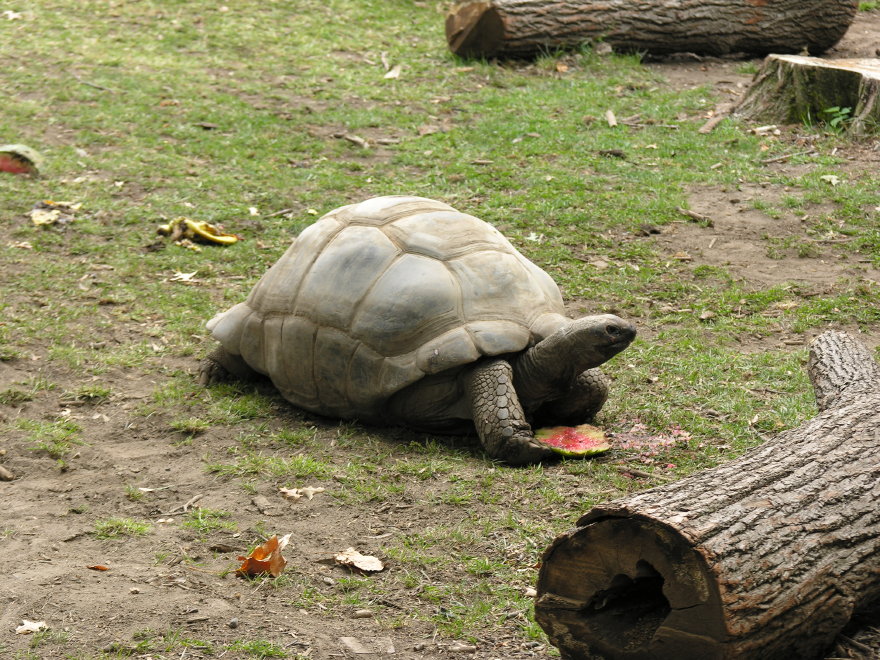Free Photo: A Galapagos tortoise enjoys a snack of watermelon.
[Previous Page | Index | Next Page]

06philadelphiazoo.jpg
A Galapagos tortoise enjoys a snack of watermelon in the yard of it's enclosure at the Philadelphia Zoo in Eastern PA.
Galapagos tortoises are the largest living tortoises, and they can live 150-200 years. They live in warm dry regions and cool forest areas on the sides of the volcano.
Not only are the males generally larger than the females, but they also have relatively longer tails. Galapagos tortoises are typically an overall dull black color, and they have paler, pink skin around the head and throat compared to the Aldabra tortoises.
Galapagos tortoises have large scales on their legs that act as protective devices when they withdraw into their shell. When withdrawing, they protect their head by meeting their elbows front. The Galapagos tortoise's foot bones are structured to facilitate walking, and their pillar-like legs help support their weight. Their lower jaws are covered by horny ridges with serrated edges that help them cut through tough plants. Galapagos tortoises also have a good sense of smell. (source: http://www.philadelphiazoo.org/zoo/Meet-Our-Animals/Reptiles/Turtles/Galapagos-Tortoise.htm)
[Previous Page | Index | Next Page]
This page last updated January 2015
Visit http://www.TechnologySite.org for free
photos and lists of inventions and technology. Visit http://www.ClimateChangeFacts.info for unbiased
information about climate change. Visit http://www.ClimateCooling.org for eye-opening
biased information on global cooling and climate change and visit http://www.OceanAssoc.com for fisheries
and oceans consulting services.